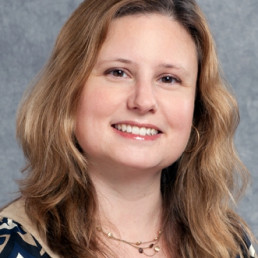Making government services more people-centric is not a new aspiration, but with fast advances in technology and rising societal expectations, public sector senior leaders are re-imagining how to deliver on that promise.
Since the inception of e-government in the early 2000s (later also known as smart government and digital government), making services available through digital channels became a critical instrument to improve citizen and business experience, as well as to attract investors and tourists, and collaborate with across government entities. These initiatives yielded results in terms of operational efficiency, convenience for and engagement with constituents.
Notwithstanding the progress, siloed processes and systems, forcing people and businesses to experience time-consuming bureaucratic services, and inequality of access to e-government services are still open issues.
Public sector leaders that aim to usher in the next generation of the people-centric services should understand people’s and businesses’ needs and circumstances through intelligent use of data, simplifying and joining up services across programs, partnering with the private sector, making digital services more inclusive, and enabling trusted interactions to make the bureaucracy truly “invisible”.
Reimagining Service Delivery, Operating and Trust Models
Making government bureaucracy invisible means embracing technology-powered innovation to drive proactive operations that will deliver seamless services for empowered people and businesses:
- Service delivery model. The next generation of invisible services will be seamless. Constituents (citizens, businesses, investors, tourists, etc.) will not realize that public services are being delivered. They will not be asked to interact with the government to know what services they are entitled to or be interrupted in their daily routine because they receive a request to provide data to prove changes in circumstances.
- Operating model. The next generation of invisible operations will be proactive. Without intruding into people’s and businesses’ daily lives, the government will know enough to understand the events that impact constituents and changes in circumstances. Governments will proactively register constituents for programs that they are entitled to and automatically deliver services.
- Trust model. The next generation of invisible bureaucracy will shift from enforcement to empowerment. Instead of enforcing compliance after the fact, the government will make compliance easy for constituents through automated, proactive services, and simplified regulations. Government will invest in digital trust through proactive, transparent personalized notifications, and tools to see how personal data is being used across departments.
The Road to Invisible Government Bureaucracy
To accelerate the road towards Invisible Government Bureaucracy, public sector senior leaders should implement changes around the six building blocks:
- Building a holistic view of people, businesses, and communities. To avoid asking for the same data again and again, to understand when a change in circumstances offers an opportunity for the government to proactively deliver a service, and to empower open engagement, governments are investing to build a 360° view of people, businesses, communities.
- Scaling cognitive processes and services. Governments need to re-engineer processes and embed AI-enabled cognitive capabilities into systems so that they can recognize changes in the circumstances of their constituents, identify root causes and trigger operational workflows or dynamically reconfigure services and programs to satisfy the evolving constituent needs.
- Designing and delivering people-centric experience journeys. Increasingly, people will expect to interact with systems through conversational interfaces that can recognize their language, accent, tone of voice, instead of having to scroll through screens and fill forms. Cognitive capabilities will be embedded in every touch points throughout the user experience journey.
- Ensuring accessibility and inclusion for all. The non-intrusive and proactive nature of the invisible government bureaucracy will also enhance inclusion by lowering accessibility the barriers. However, as conversational and generative AI, immersive reality solutions become more pervasive, they must be designed with accessibility in mind.
- Investing in next-generation trust services. The public sector should invest in digital trust tools that enable citizens to conveniently access digital services across government, without having to remember multiple login credentials. Such tools will help citizens have a transparent understanding on how government use personal data and opt-in or opt-out of data sharing.
- Expanding collaboration with third parties. Government are working with private enterprises and community organizations to enable constituents to enjoy the lowest possible number of interactions with the government, to eliminate duplicate request for personal data, and the best possible convenience and proximity when those interactions are needed.
The latest IDC Government Insights study explores how to adapt organizational capacity and competencies, revisit policies, work with the ecosystem, and ensure public trust, to make Invisible Government Bureaucracy a reality.




